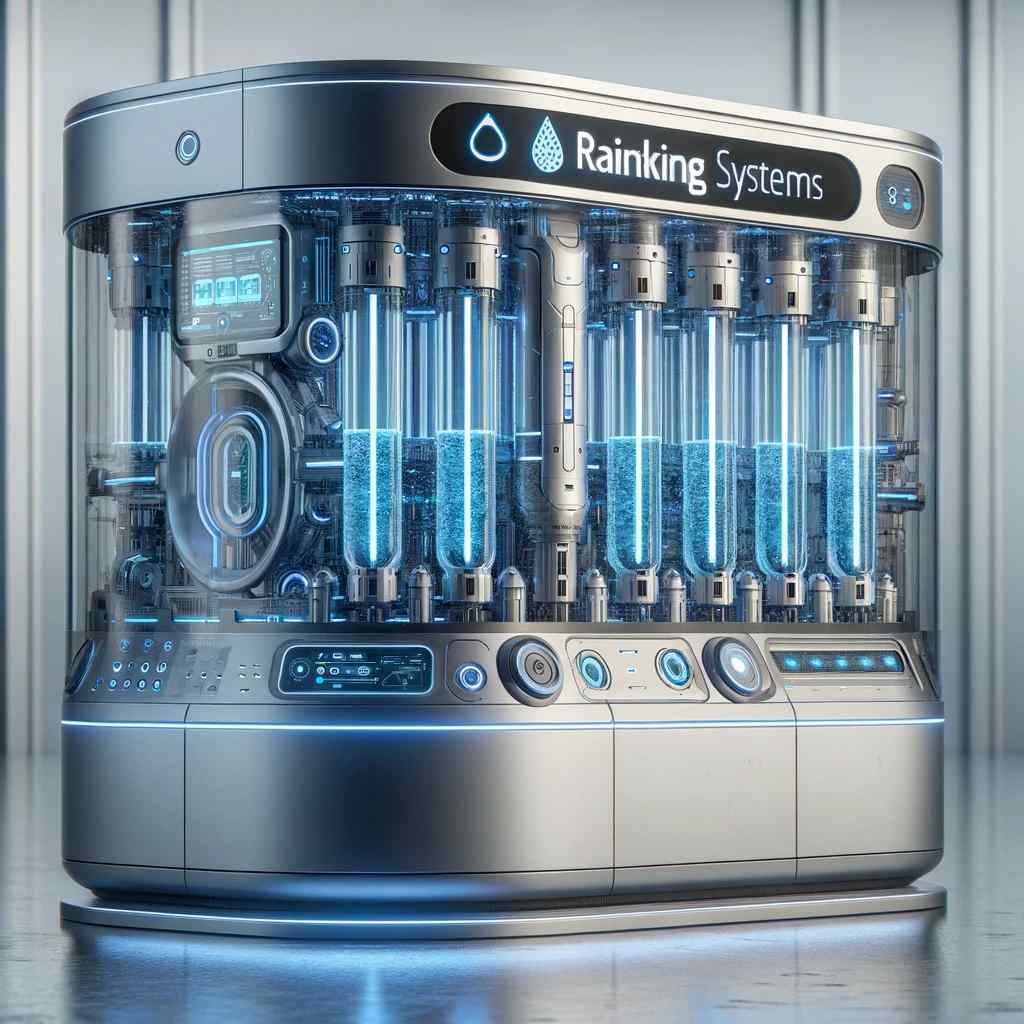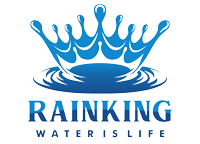In a world where clean and safe drinking water is becoming increasingly scarce, the need for innovative filtration technology has never been more pressing. The water revolution unveiling the future of filtration technology. From developing countries struggling with waterborne diseases to urban areas grappling with aging infrastructure, the demand for effective water filtration solutions is on the rise. Enter the Water-Revolution, a groundbreaking movement that aims to unveil the future of water filtration technology. But what exactly does this revolution entail? Well, it goes far beyond your average water filter pitcher or faucet attachment. We’re talking about cutting-edge advancements that have the potential to completely transform the way we access and consume water. Imagine a world where water is purified not just through basic physical and chemical processes, but through groundbreaking technologies that harness the power of nanotechnology, artificial intelligence, and renewable energy. The future of water filtration technology holds limitless possibilities. Through the integration of nanomaterials, scientists are developing filters with pores so small that even the tiniest contaminants can be trapped and removed. These nanofilters, with their exceptional efficiency and high flow rates, have the potential to revolutionize water treatment systems across the globe. Additionally, the use of smart sensors and machine-learning algorithms allows for real-time monitoring and optimization of filtration processes, ensuring that water quality is consistently maintained at the highest standards. Renewable energy sources also play a significant role in the future of water filtration technology. By harnessing the power of solar or wind energy, filtration systems can operate off-grid, providing clean water to remote areas without access to electricity. This not only increases the reach of filtration technology but also contributes to sustainability and environmental preservation. In this blog post, we will dive deep into the exciting advancements shaping the water revolution. We will explore how nanotechnology, artificial intelligence, and renewable energy are coming together to create a new era of water filtration. Join us as we unveil the future of water filtration technology and discover how these innovations have the potential to transform the way we protect and preserve our most precious resource – water.

The Power of Nanotechnology: Revolutionizing Water Filtration Efficiency
Nanotechnology, the science of manipulating matter at the atomic and molecular scale, is at the forefront of the water revolution. By harnessing the power of nanomaterials, scientists are developing filters with pores so small that even the tiniest contaminants can be trapped and removed. These nanofilters offer exceptional efficiency and have the potential to revolutionize water treatment systems across the globe.
Traditional filtration methods rely on physical barriers or chemical processes to remove impurities from water. However, these methods often fall short when it comes to removing contaminants such as bacteria, viruses, and heavy metals. Nanomaterial filters address this challenge by utilizing materials with unique properties at the nanoscale.
One example is graphene oxide, a two-dimensional material consisting of a single layer of carbon atoms arranged in a hexagonal lattice. Graphene oxide membranes have been shown to effectively filter out nanoparticles, organic molecules, and even salts from water. The ultra-thin nature of these membranes allows for high flow rates while maintaining excellent filtration efficiency.
In addition to graphene oxide, other nanomaterials such as carbon nanotubes and metal-organic frameworks are also being explored for their filtration capabilities. These materials can be engineered to have specific properties that enhance their ability to selectively remove contaminants from water.
The power of nanotechnology lies in its ability to manipulate matter at such a small scale that it can significantly improve filtration efficiency. With further research and development, nanomaterial filters have the potential to become a standard component in water treatment systems worldwide.
Harnessing Artificial Intelligence: Real-Time Monitoring and Optimization of Filtration Processes
Artificial intelligence (AI) is another key player in the future of water filtration technology. By integrating smart sensors and machine-learning algorithms, filtration systems can be equipped with real-time monitoring and optimization capabilities.
Traditional water treatment plants often rely on manual monitoring and periodic sampling to ensure water quality. This approach is time-consuming and may not capture sudden changes or fluctuations in water conditions. AI-powered sensors, on the other hand, can continuously monitor various parameters such as pH levels, turbidity, and dissolved oxygen in real-time.
These sensors collect data that is then analyzed by machine-learning algorithms. Over time, these algorithms can learn to identify patterns and anomalies in the data, allowing for early detection of potential issues or deviations from desired water quality standards.
Furthermore, AI algorithms can optimize filtration processes based on the collected data. By adjusting variables such as flow rates, chemical dosages, and filter backwashing schedules, AI-powered systems can ensure that water quality is consistently maintained at the highest standards.
This real-time monitoring and optimization not only improves the efficiency of water treatment processes but also reduces operational costs by minimizing waste and energy consumption. The integration of AI in filtration systems brings us one step closer to fully automated and intelligent water treatment plants.
Smart Sensors: Ensuring Consistently High Water Quality
In addition to AI-powered sensors, smart sensors play a crucial role in ensuring consistently high water quality. These sensors are capable of detecting a wide range of contaminants with high accuracy and sensitivity.
Traditional methods of water quality testing often involve sending samples to laboratories for analysis. This process can be time-consuming and may not provide real-time results. Smart sensors offer a more efficient alternative by enabling on-site testing with rapid detection capabilities.
Smart sensors utilize various technologies such as optical sensing, electrochemical sensing, and biosensing to detect contaminants in water. These sensors can detect pollutants such as heavy metals, pesticides, and organic compounds at extremely low concentrations.
Furthermore, smart sensors can be integrated into water distribution systems to provide continuous monitoring of water quality throughout the distribution network. This ensures that any changes or deviations in water quality can be detected and addressed promptly.
The use of smart sensors not only improves the efficiency of water treatment processes but also enhances public health by ensuring that consumers have access to safe and clean drinking water. These sensors are a vital component in the future of water filtration technology.
Nanomaterial Filters: Trapping and Removing Even the Tiniest Contaminants
As mentioned earlier, nanomaterial filters have the ability to trap and remove even the tiniest contaminants from water. This is achieved through their unique properties at the nanoscale.
One key property of nanomaterials is their large surface area-to-volume ratio. This means that a small amount of nanomaterial can provide a significantly larger surface area for contaminants to interact with, increasing the chances of effective filtration.
In addition, nanomaterial filters can be engineered to have specific surface properties that enhance their ability to remove contaminants selectively. For example, functionalizing the surface of a nanofilter with specific chemical groups can enable it to attract and bind certain types of pollutants while repelling others.
Furthermore, researchers are exploring ways to incorporate antimicrobial properties into nanomaterial filters. By incorporating nanoparticles with antimicrobial properties, these filters can not only remove contaminants but also inhibit bacterial growth within the filtration system itself.
The exceptional efficiency and selectivity of nanomaterial filters make them an ideal candidate for advanced water treatment applications. With ongoing research and development, these filters have the potential to address some of the most challenging water contamination issues we face today.
High Flow Rates: Improving Water Treatment Systems Across the Globe
One of the key advantages of nanomaterial filters is their ability to maintain high flow rates while effectively removing contaminants. This is crucial for improving water treatment systems across the globe.
Traditional filtration methods often suffer from low flow rates due to the buildup of contaminants on the filter surface. As contaminants accumulate, they create a barrier that restricts water flow and reduces filtration efficiency.
Nanomaterial filters, on the other hand, have self-cleaning properties that prevent the accumulation of contaminants. The small pore size and unique surface properties of these filters allow for efficient removal of particles without clogging or compromising flow rates.
This high flow rate capability is particularly beneficial in large-scale water treatment plants where a significant volume of water needs to be processed within a short period. By improving flow rates, nanomaterial filters can increase the overall efficiency and capacity of water treatment systems, ensuring that clean and safe drinking water is readily available to communities worldwide.
Off-Grid Filtration: Providing Clean Water to Remote Areas with Renewable Energy
Access to clean and safe drinking water is a basic human right, yet many remote areas around the world still lack reliable access to clean water sources. Off-grid filtration systems powered by renewable energy offer a solution to this pressing issue.
Traditional water treatment plants rely on electricity from the grid, making them inaccessible in remote areas without reliable power infrastructure. Off-grid filtration systems, on the other hand, can operate independently using renewable energy sources such as solar or wind power.
These systems are equipped with solar panels or wind turbines that generate electricity to power pumps, sensors, and other components necessary for water treatment. Excess energy can be stored in batteries for use during periods of low sunlight or wind activity.
The combination of off-grid filtration and renewable energy not only provides clean water to remote areas but also contributes to sustainability and environmental preservation. By reducing reliance on fossil fuels and minimizing carbon emissions, these systems offer a more environmentally friendly approach to water treatment.
Off-grid filtration systems have the potential to transform the lives of communities in remote areas, ensuring that they have access to clean and safe drinking water without the need for extensive infrastructure development.
Increasing the Reach of Filtration Technology: Sustainability and Environmental Preservation
The future of water filtration technology is not just about improving efficiency and accessibility; it is also about sustainability and environmental preservation. As we face growing concerns over water scarcity and environmental degradation, it is crucial that our filtration systems are designed with these factors in mind.
Nanotechnology, AI, and renewable energy all contribute to the sustainability of water filtration technology. Nanomaterial filters, with their exceptional efficiency, reduce the amount of waste generated during the filtration process. This minimizes the environmental impact associated with traditional filtration methods.
AI-powered sensors and optimization algorithms help optimize energy consumption by adjusting variables such as flow rates and chemical dosages. This ensures that resources are used efficiently while maintaining high water quality standards.
Renewable energy sources such as solar or wind power not only enable off-grid filtration systems but also reduce reliance on fossil fuels. By harnessing clean energy sources, we can minimize carbon emissions associated with water treatment processes.
Incorporating sustainability into water filtration technology is essential for long-term environmental preservation. By adopting these innovative approaches, we can ensure that future generations have access to clean and safe drinking water while minimizing our impact on the planet.
Unveiling the Future: How Nanotechnology, AI, and Renewable Energy Come Together in Water Filtration
The future of water filtration technology lies in the convergence of nanotechnology, AI, and renewable energy. These three pillars work together to create a new era of water filtration that is efficient, intelligent, and sustainable.
Nanotechnology provides the foundation for advanced filtration materials with exceptional efficiency and selectivity. By manipulating matter at the atomic and molecular scale, scientists can engineer filters with pores so small that even the tiniest contaminants can be trapped and removed.
AI-powered sensors and machine-learning algorithms enable real-time monitoring and optimization of filtration processes. This ensures that water quality is consistently maintained at the highest standards while minimizing energy consumption and operational costs.
Renewable energy sources such as solar or wind power provide the necessary energy for off-grid filtration systems. By harnessing clean energy sources, these systems can operate independently in remote areas without access to electricity from the grid.
Together, these advancements in nanotechnology, AI, and renewable energy are transforming the way we protect and preserve our most precious resource – water. They offer a glimpse into a future where clean and safe drinking water is accessible to all, regardless of geographical location or socioeconomic status.
Conclusion: Transforming the Way We Protect and Preserve Our Most Precious Resource – Water
The future of water filtration technology holds immense potential for addressing global water challenges. The integration of nanotechnology, AI, and renewable energy is revolutionizing how we access, treat, and consume water.
Nanomaterial filters with their exceptional efficiency have the ability to remove even the tiniest contaminants from water. AI-powered sensors enable real-time monitoring and optimization of filtration processes to ensure consistently high water quality standards.
Off-grid filtration systems powered by renewable energy sources provide clean water to remote areas without access to electricity from the grid. This not only increases accessibility but also contributes to sustainability and environmental preservation.
As we unveil the future of water filtration technology, it is crucial that we continue to prioritize sustainability and environmental preservation. By adopting these innovative approaches, we can protect and preserve our most precious resource – water – for generations to come.



